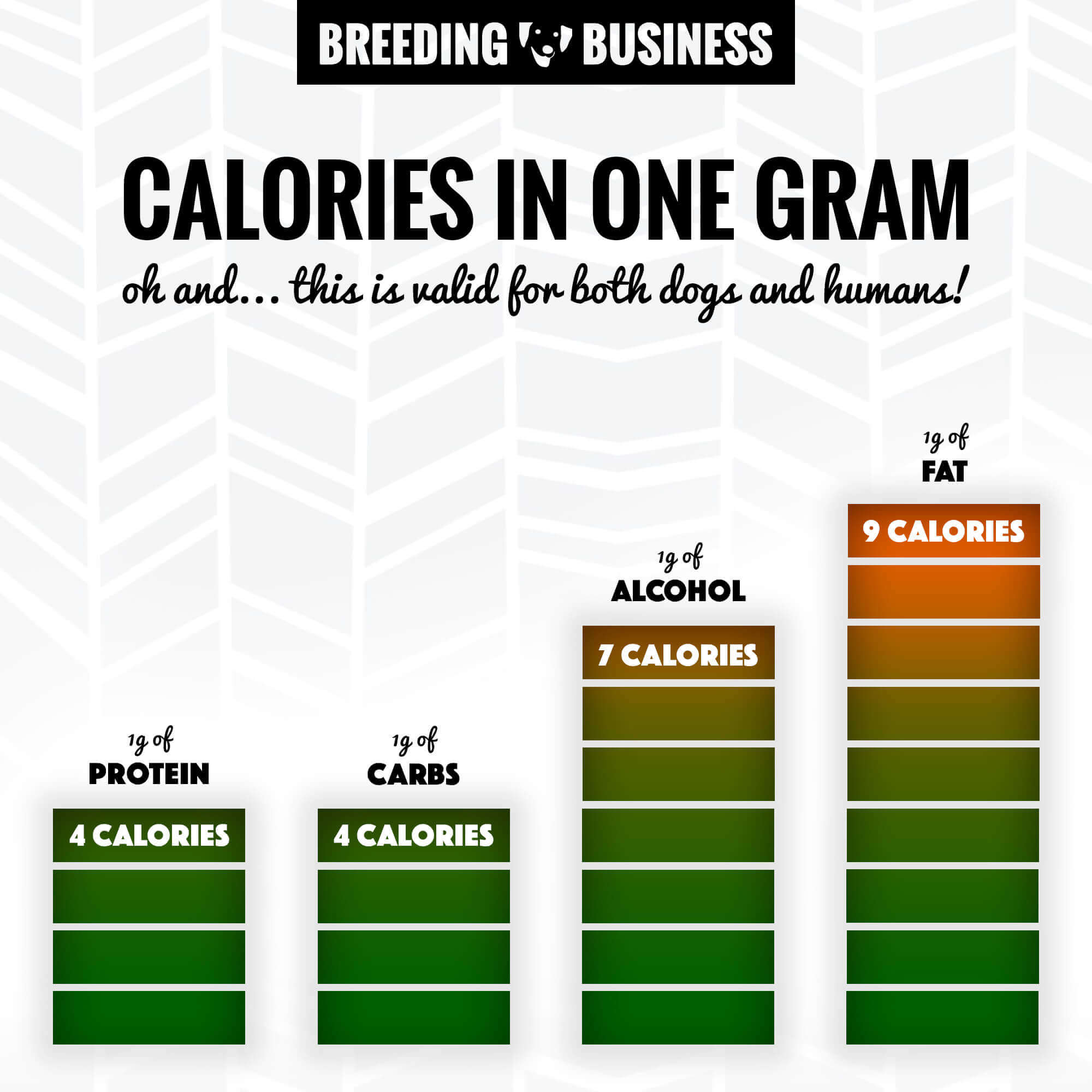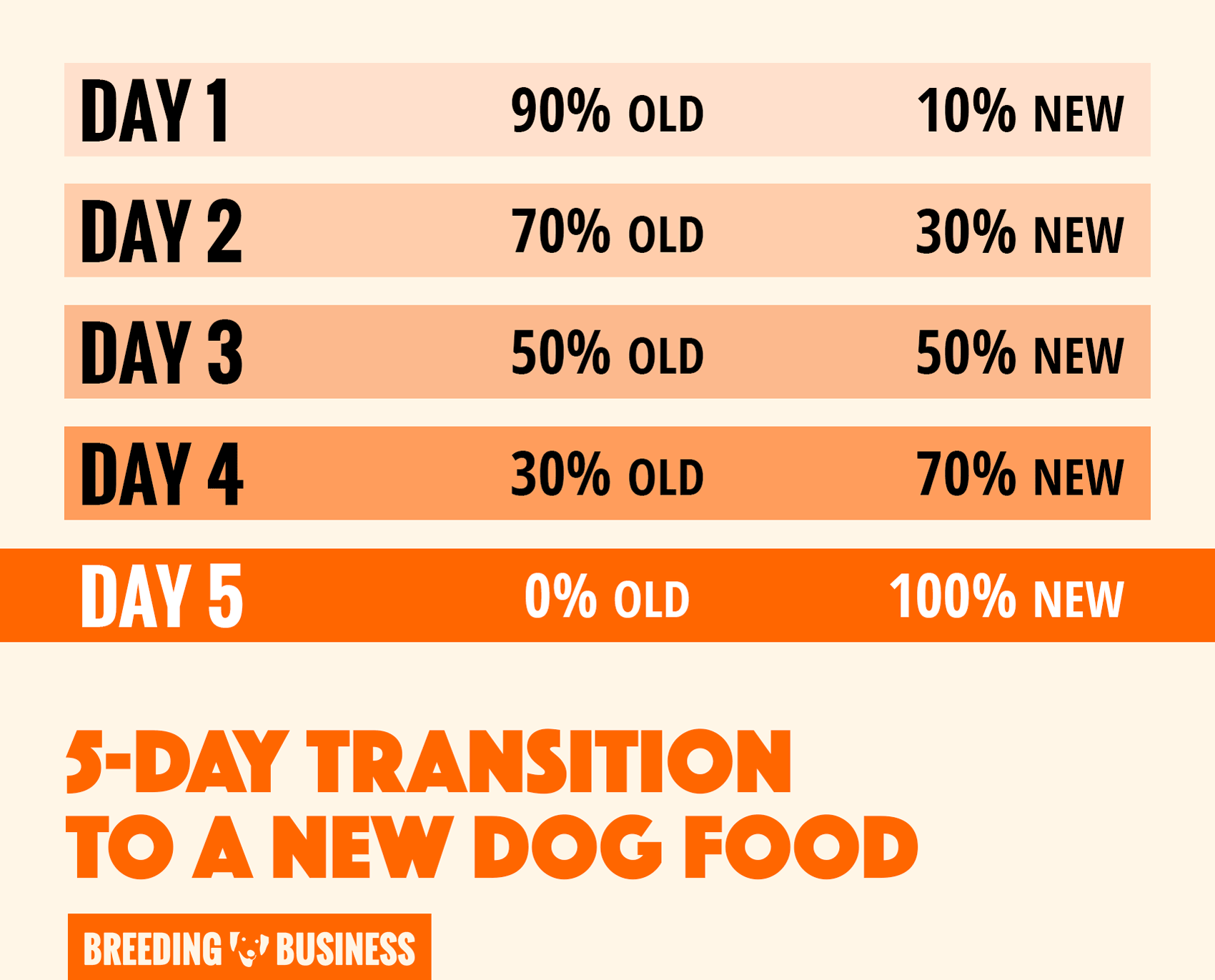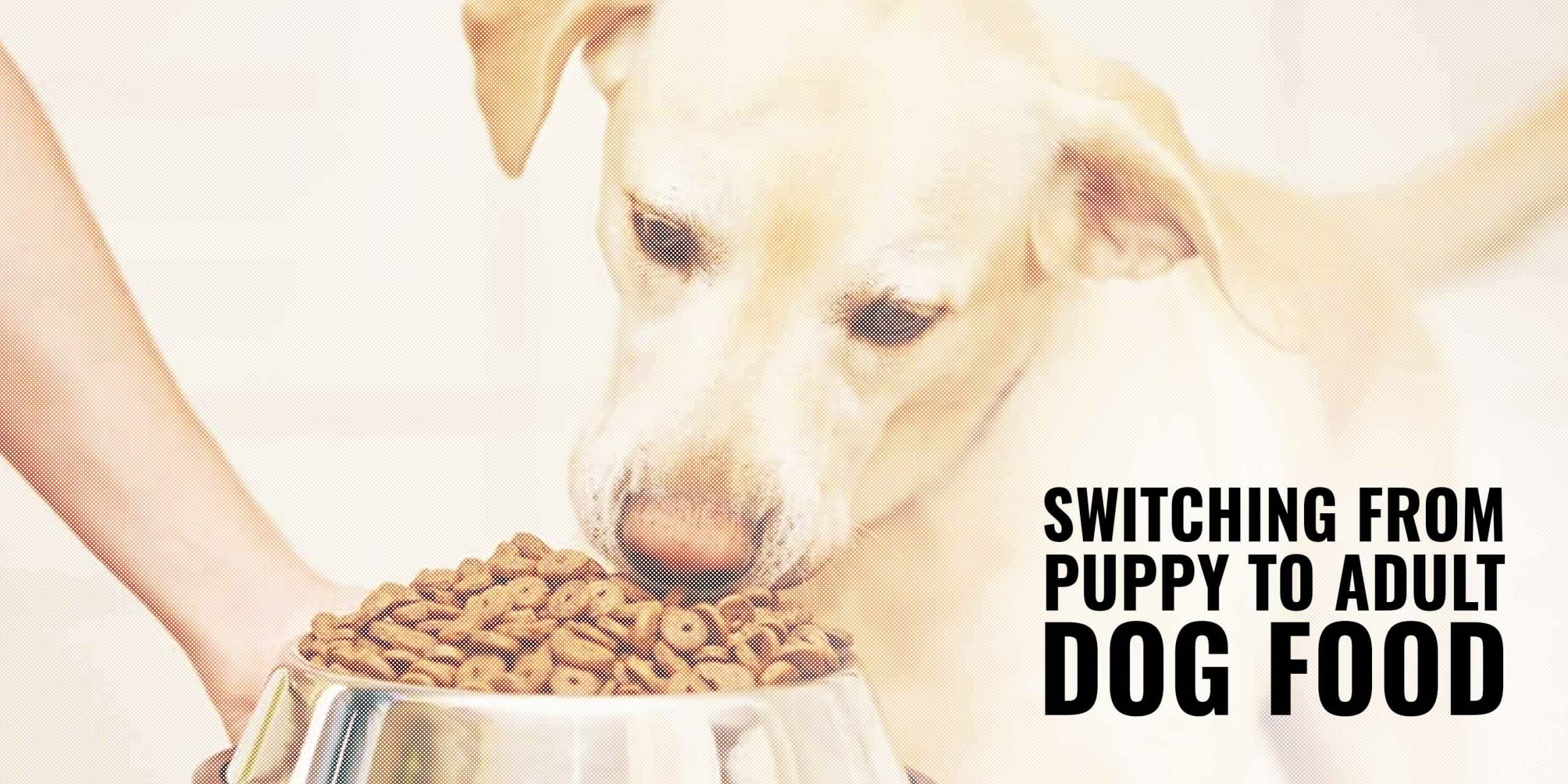When to switch from puppy to adult dog food can be an unnerving time. Progressing too quickly can cause an upset stomach and stress for you and your dog. Puppies require more calories and protein for growth and their nutritional needs change as they age.
So you’re not sure when or how to switch from puppy to adult kibble. We can help to explain the right time, why you should do so and the best method. This will ensure your puppy is feeling good and you are feeling confident with this big change.
When to Switch Your Dog from Puppy to Adult Dog Food?
It is important to note that every breed will differ in the exact time you should be switching from puppy to adult food. This is largely due to size and breed type. On average, a puppy can be considered an adult at one year of age and this is the time to switch their dog food. However, smaller breeds will grow much more quickly than larger breeds. So some individuals require the switch sooner and some later. You should also consider factors such as their weight and whether or not they are spayed/neutered. As these can too affect when you should be switching your dog from puppy to dog kibble.
Small to medium breeds
The average age to begin switching your puppy to dog food is around one year if they are a small to medium breed. This is because physical maturity can be defined when a puppy reaches its breed’s expected height and weight. A small breed will weigh under twenty pounds at maturity. Whereas a medium breed will weigh under fifty pounds at maturity. An exception to these weight categories are toy breeds. Which usually average at four to seven pounds when they are adults.
Here are some good websites to calculate the predicted adult height and weight of your puppy. You can start switching your puppy to dog kibble when they reach 80% of their adult size. Once you find the predicted weight and height for your dog’s breed, divide this amount by ten and multiply it by eight to find 80% of their adult weight. Once they reach this number, you can start the switch.
The reason you can transfer puppies to adult kibble much more quickly in small and medium breeds is their growth rate. Smaller breeds grow much more quickly than larger because reaching adult size requires less energy as there is less growth. For a toy breed puppy to reach adult size, it will not take as much energy as a Great Dane puppy’s growth. Therefore you can expect it to happen a lot sooner. But how often should you weigh your puppy? We recommend doing so initially once a month. Depending on what age you bought the puppy. Increase the occasions you are weighing your pup to once every two weeks. Then once a week as their weight gains to the appropriate percentage of their expected adult weight.
Large to giant breeds
Large to Giant breeds can often take double the time to reach their mature weight and height. Therefore they are technically puppies for longer. On average it will take a larger breed a year and a half to reach their adult weight and a giant breed two years. These large breeds are often at risk of irregular growth due to an improper diet. This can include moving your puppy onto dog food too quickly. Problems such as joint pain and arthritis can occur. Hence why it is so important to begin switching your puppy to dog food at the right time.
At the beginning of a puppy’s life, they will be taken to the vets regularly for check-ups, shots, and possibly neutering/spaying them. We advise consulting a vet during one of these visits about their advice with your particular large breed pup. As this is from a professional, you can feel confident in knowing you are providing the best care for your dog. Furthermore, they can look at your dog as an individual and give tailored advice and check their growth rate right then and there.
To weigh your puppy we recommend weighing yourself, then lifting your puppy onto the scale with you. Then subtract your weight from the total amount to find their current weight. However, as your large breed puppy grows, this will be more and more difficult. You can take your pup to the vets to have them weighed or order a large scale that your dog can walk onto. The same percentage estimate is given to large dog breeds as small. Once they reach 80% of their expected adult weight, you can begin to switch your puppy to adult food. Here is the calculation again to figure out 80% of your dog’s adult weight. Your dog’s expected adult weight for their breed divided by 10 and then multiplied by 80.
Differences Between Puppy and Adult Dog Kibble
The difference between puppy and adult dog food lies in the percentage of protein and calories. Growing puppies need more calories for energy and protein for growth and repair, which is why their food has different amino acids and nutrient percentages. Puppy food also contains strains of Omega 3, such as DHA, which are beneficial to them.
To understand why low carb dog food is good, it’s important to know why fats can be problematic when your dog needs to be in a calorie deficit.

A cup of puppy food contains an average of 400 calories, while adult dog food contains around 300 calories per cup but can range from 200-400 calories. Puppies tend to play and run more than adult dogs, which is why they need more calories to support their growth. If they don’t get enough calories, their growth may be stunted. Conversely, too many calories can lead to obesity in adult dogs.
Protein is another essential nutrient for puppy growth, as it is the main building block for muscles, bones, ligaments, and blood. Puppies require more protein than adult dogs, with an average of 22.5-32% protein in their food compared to 18% in adult dog food. Excess protein in grown dogs can lead to weight gain, kidney and liver problems, and a weakened immune system.
It’s important to gradually transition puppies to adult dog food because the contents of the food are different. By monitoring your puppy’s behavior and nutritional needs, you can provide them with the best food for their growth and development.
How to Transition from Puppy to Adult Dog Food

When you begin switching from puppy to dog food, you want to do so gradually. If you do not do so, you cause the risk of your puppy having an upset stomach, feeling ill and possible vomiting or having diarrhea. To counteract this, you need to gradually mix dog food over the course of a week. Start by mixing one-quarter of the adult food with three-quarters of the puppy food with their daily meals. After a few days, you can begin to mix half of the adult food and half of the puppy food. By day five or six you can mix three-quarters of the adult food to one-quarter of the puppy food. By day seven your pup will be ready for just dog food!
This adjustment period is important, especially if your puppy has a sensitive stomach. But even by gradually switching from puppy to adult food, some things can still go wrong. Sometimes your dog may have an intolerance to an ingredient or certain food type. So you have to find which brand is right for your individual. If you are worried, you can consult a vet and get their opinion.
Can my Puppy have Regular Dog Food?
[adwithin]
If you have a puppy, it’s best to avoid giving them regular dog food. Puppies need a different set of nutrients compared to adult dogs. If you give them mature dog food, they might get too much of some nutrients while missing out on others. This can affect their growth, and lead to joint pains, arthritis, and weakened immunity. In some cases, this can even result in organ failure.
It’s important to note that puppies need a higher amount of protein and calories than adult dogs to grow properly. Not giving them the right nutrients can result in health issues. Therefore, it’s essential to give them food specially designed for puppies to make sure they get the nutrients they need
How to Stop Your Puppy From Eating Other Pets’ Food?
The best method to stop your puppy trying to eat from bowls that are not theirs is to feed your animals in different rooms. If you have multiple puppies, for example, a litter, try to ‘chain’ feed them. This means feeding one in an isolated room and as soon as it is finished, bring in the next puppy and their meal. Another option is feeding the animals at the same time in different rooms. As then all the individuals will be distracted. However, if for example, you own a cat who will graze and eat throughout the day, move their bowl. Put it on a surface your dog cannot reach or in a room they are not allowed in. Make sure to train them so they do not attempt to reach the bowl or bark at it.
How Much Time Does my Puppy Need to Adjust to New Food?
It’s important to transition your puppy or dog slowly to any new food, just like switching from puppy to adult food. This gradual adjustment helps prevent digestive upset. To do this, start by adding a small amount of the new food to your pet’s old food and gradually increase the amount of new food each day. Make sure to give your dog at least a week to adjust to their new diet. By day seven, the old food should be completely replaced with the new food.
